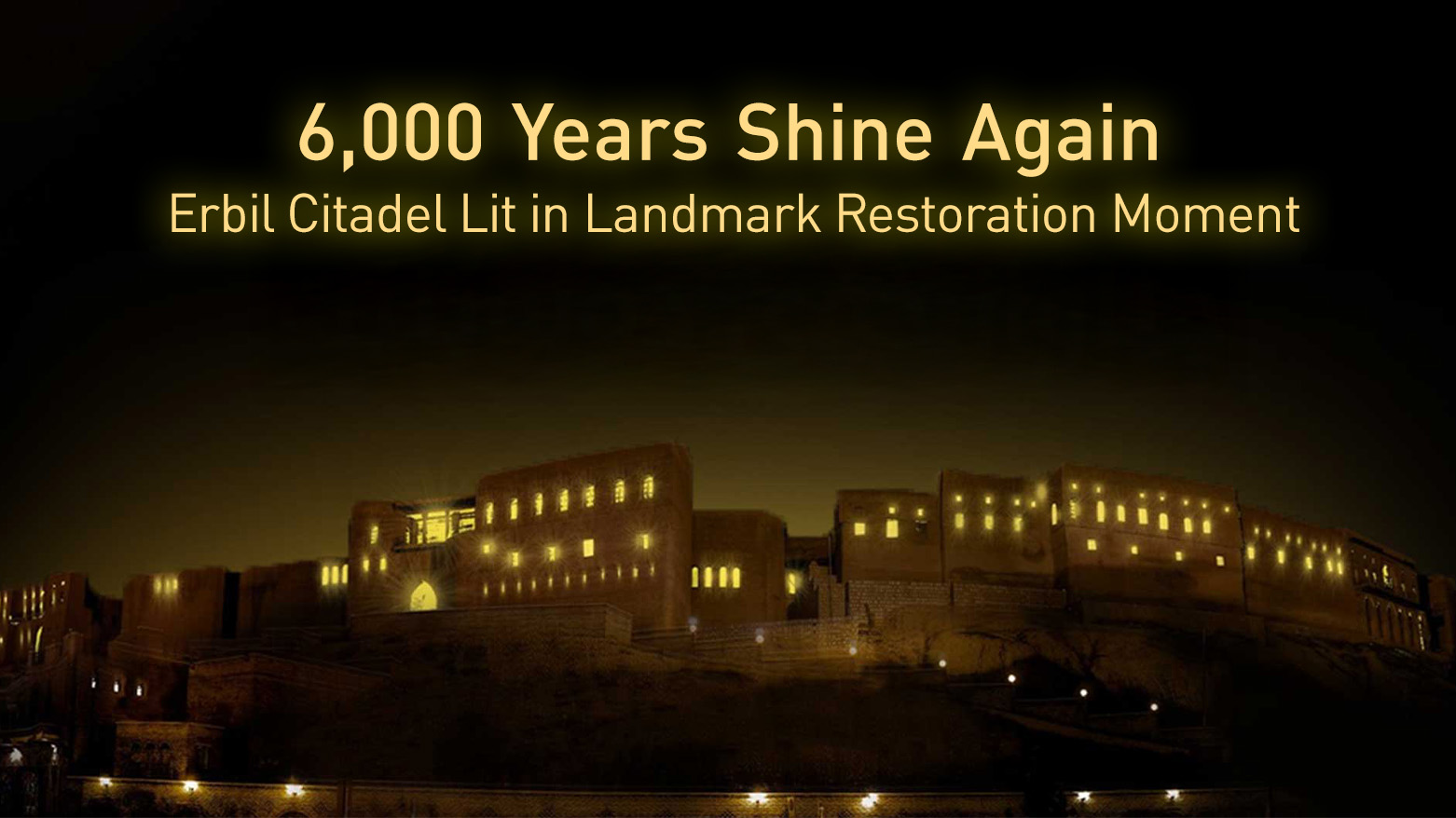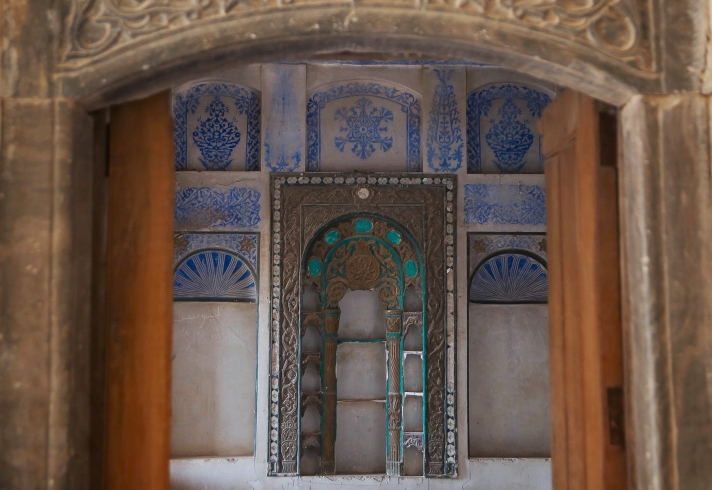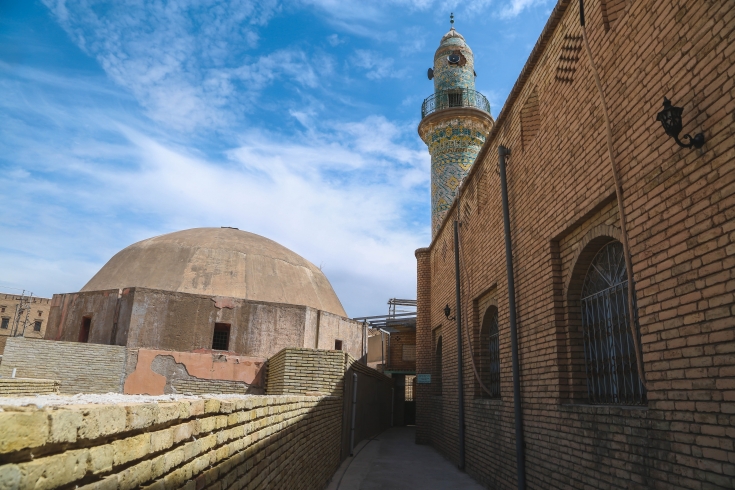6,000 Years Shine Again: Erbil Citadel Lit in Landmark Restoration Moment
The lighting of more than half of the citadel’s edge structures not only showcased the architectural grandeur of the ancient site, but also signaled the progress of an ambitious revival plan that envisions families returning to live inside its fortified walls.

By Kamaran Aziz
ERBIL (Kurdistan24) — In a moment charged with symbolism and historic pride, Erbil's iconic citadel was partially illuminated on Thursday night, marking a major milestone in the ongoing restoration of one of the world’s oldest continuously inhabited sites.
The lighting of more than half of the citadel’s edge structures not only showcased the architectural grandeur of the ancient site, but also signaled the progress of an ambitious revival plan that envisions families returning to live inside its fortified walls.
Falah Hassan, Head of the High Commission for the Revival of Erbil Citadel, spoke with visible pride during the event. “After extensive work, and through the hands of Kurdish engineers and workers, along with our commission’s coordination, on Thursday we illuminated more than half of the houses along the edge of Erbil Citadel as a test,” he announced, drawing attention to the deep local involvement in the preservation of this monumental site.
The Erbil Citadel, perched atop a mound rising 28 to 32 meters above the surrounding plain, is more than an architectural relic—it is a living testament to six millennia of uninterrupted human settlement. Its unique egg-shaped layout spans a length of 430 meters and a width of 340 meters, encircled by a continuous ring wall that gives it both aesthetic harmony and defensive integrity.
According to Kurdistan24 sources, the citadel’s restoration has entered advanced phases, with the renovation of the Grand Mosque, numerous traditional houses, and multiple neighborhoods either completed or nearing completion. The master plan also includes the reintroduction of residential life within the citadel, a return to tradition that envisions Kurdish families reclaiming their ancestral dwellings.
With a network of narrow pedestrian alleys, inward-facing courtyards, and historical structures including tekiyas (Sufi lodges), public bathhouses, artillery posts, and palaces, Erbil Citadel reflects a layered urban fabric. Each era—Sumerian, Akkadian, Babylonian, Assyrian, Persian, Greek, Islamic, and Ottoman—has left its imprint on the site, turning it into a rich mosaic of civilizational continuity.
The lighting ceremony was more than symbolic; it represented a step toward the vision of reviving the citadel not just as a static heritage monument, but as a dynamic cultural and residential hub. International preservation organizations, including UNESCO, have long recognized Erbil Citadel’s universal significance, and its restoration is seen as a flagship project for cultural heritage in the Kurdistan Region.
Despite its progress, the restoration effort is not yet complete. Technical and logistical challenges persist, particularly in maintaining historical authenticity while adapting the structures to modern standards of living. Yet the renewed glow along the citadel’s perimeter offers a tangible sense of momentum and hope.
As Kurdistan24 continues to monitor developments, the illumination of Erbil Citadel stands as a reminder that even amidst modern political and urban transformations, the roots of Kurdish history remain firmly—and now visibly—anchored in the ancient stones of this enduring citadel.


